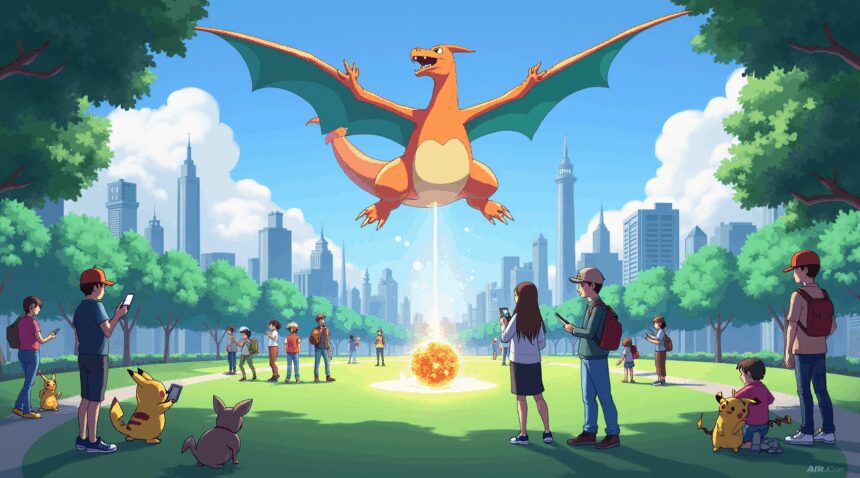Pokémon and Pokémon GO showcase remarkable innovation strategies that maintain the franchise’s vitality nearly three decades after its launch, with Pokémon GO alone sustaining over 90 million monthly active players in 2025 while the broader franchise generates over $100 billion in lifetime revenue.
The franchise’s success stems from its ability to evolve while staying true to the core mechanics of collecting and battling. By introducing novel features and adapting to emerging technologies and player trends, Pokémon maintains its iconic status across generations.
Key Takeaways
- Sustained Player Engagement: Pokémon GO retains over 90 million monthly players by implementing regular content updates, hosting engaging seasonal events, and offering innovative features such as Remote Raids, which remove geographical limitations.
- Multi-Platform Innovation: The franchise excels in adapting to evolving platforms, offering experiences from augmented reality mobile games to open-world console titles—all while preserving the core elements that fans love.
- Cross-Media Ecosystem: Pokémon has strategically expanded into animation, films, and merchandise, cultivating multiple revenue streams and fostering an expansive pop culture presence that reinforces consumer loyalty across age groups.
- Community-Driven Features: The inclusion of social mechanics such as cooperative gameplay, trading systems, and official tournaments builds a sense of community and encourages organic word-of-mouth growth.
- Generational Appeal: Pokémon sustains its relevance by both captivating new audiences and retaining lifelong fans, creating an ongoing cycle as adults pass their love of Pokémon to their children.
To explore how Pokémon GO continues building on these strategies, check out the official Pokémon GO website.
How Pokémon GO Maintains 90 Million Monthly Players in 2025
Pokémon GO continues to demonstrate remarkable staying power in the mobile gaming landscape, maintaining over 90 million monthly active players globally as of 2025. I find this achievement particularly impressive considering the game launched in July 2016, making it nearly nine years old in an industry where most mobile games struggle to retain audiences beyond their first year.
The game’s daily engagement metrics paint an equally compelling picture. With over 5 million players logging in daily, Pokémon GO has managed to sustain consistent user engagement that peaked at nearly 6 million players in early 2025. This level of sustained activity reflects the developers’ success in evolving the core gameplay experience while introducing features that keep both veteran trainers and newcomers invested.
Financial Success Through Innovation
Annual earnings have exceeded $500 million since the game’s peak performance in 2020, demonstrating that player retention translates directly into revenue sustainability. This financial success stems from the game’s ability to balance free-to-play accessibility with meaningful premium content that enhances rather than restricts the core experience.
The introduction of Remote Raids stands out as a pivotal moment that revitalized player interest across the global community. This feature addressed one of the game’s most significant barriers by allowing players to participate in raid battles without physical proximity to raid locations. Remote Raids transformed the social dynamics of the game, enabling coordination between players worldwide and maintaining engagement during periods when location-based gaming faced challenges.
Continuous Evolution and Community Focus
The game’s longevity reflects Niantic’s commitment to regular content updates and seasonal events that keep the experience fresh. Monthly community days, special research tasks, and limited-time events create recurring reasons for players to return. These updates often coincide with releases from the main series games, creating synergy between Pokémon Scarlet and Violet content and mobile gameplay.
Regional events and location-based features continue to drive real-world exploration, which remains central to the game’s appeal. The integration of AR+ technology and improved pokémon detection systems has enhanced the core catching mechanics that initially made the game revolutionary.
The social aspects of Pokémon GO have evolved significantly since launch, with features like:
- Friend lists
- Gift exchanges
- Cooperative gameplay elements
- Trading mechanics
- Friendship bonuses
These improvements create incentives for sustained interaction between players, building the social foundation that keeps millions returning daily to catch, battle, and explore together.
The $100 Billion Gaming Empire That Refuses to Slow Down
The Pokémon franchise stands as one of entertainment’s most valuable media empires, boasting an estimated cumulative sales value that reaches $100 billion. This staggering figure reflects decades of strategic expansion across multiple platforms and consistent innovation that keeps audiences engaged generation after generation.
Numbers reveal the franchise’s incredible reach – as of May 2023, Pokémon has sold over 480 million units worldwide, and this figure continues climbing steadily. I’ve watched this phenomenon evolve from a simple Game Boy concept into a multimedia juggernaut that spans gaming, animation, film, and merchandise. The franchise’s ability to maintain relevance across different age groups demonstrates its exceptional staying power in an industry known for rapidly shifting trends.
Diversification Beyond Gaming
Pokémon’s success stems from its strategic diversification across various media formats. The brand encompasses traditional video games, mobile applications, anime series, feature films, and an extensive merchandise ecosystem. This multi-pronged approach creates multiple revenue streams while reinforcing brand loyalty through different touchpoints.
The film division alone showcases this expansion strategy’s effectiveness. Pokémon: Detective Pikachu achieved remarkable success, earning over $144 million as the highest lifetime gross among Pokémon films in the U.S. and Canada. This theatrical triumph proved that the franchise could successfully transition into live-action entertainment while maintaining its core appeal. The announcement of Detective Pikachu 2 confirms the continued confidence in this expansion strategy.
Sustained Innovation and Adaptation
Recent developments demonstrate the franchise’s commitment to evolution. Pokémon Scarlet and Violet introduced open-world gameplay mechanics, while competitive play continues advancing through Generation 9 tournaments and events.
Pokémon GO represents perhaps the most significant innovation in recent years, bridging physical and digital experiences through augmented reality. The mobile game’s success created new revenue opportunities while introducing the franchise to demographics that might never have engaged with traditional gaming formats. Even controversial incidents, such as the recent case involving GO player conflicts, demonstrate the game’s intense community engagement levels.
The franchise consistently adapts to changing consumer preferences while preserving its fundamental appeal. Special events like Charizard raids maintain excitement within existing communities, while new competitive formats attract serious players seeking challenging gameplay experiences.
This strategic balance between innovation and tradition explains how Pokémon maintains its position as a $100 billion empire that shows no signs of slowing down.
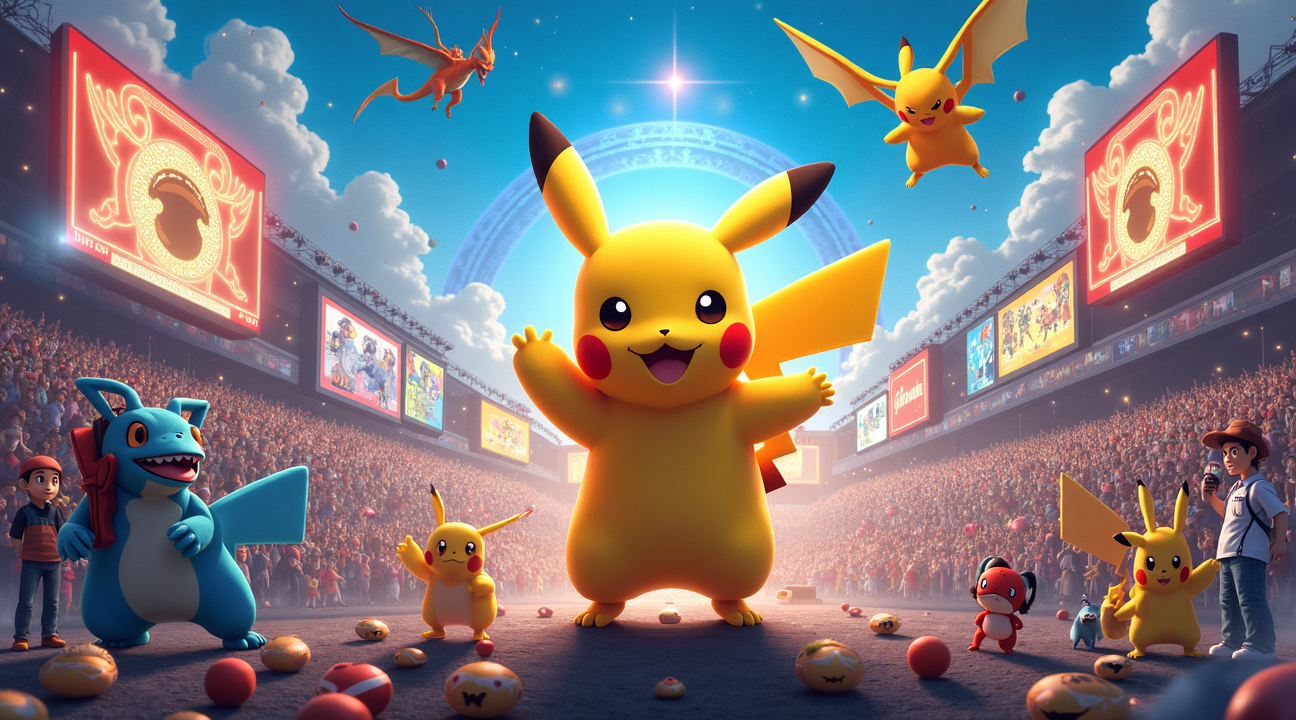
Revolutionary Updates That Keep Players Coming Back
The Pokémon Company has mastered the art of reinvention, consistently rolling out updates that breathe new life into both established and emerging titles. I’ve watched this franchise evolve over decades, and their commitment to innovation remains one of their strongest assets. Fresh content drops don’t just maintain player interest—they actively expand the community and drive engagement to new heights.
Remote Raids transformed Pokémon GO’s landscape in ways few could have predicted. This feature eliminated geographical barriers that previously limited players’ access to legendary Pokémon and special raid encounters. Players could suddenly join battles across the globe, connecting with trainers they’d never meet otherwise. The social aspect that Remote Raids introduced fundamentally changed how people approach the game, turning solo experiences into collaborative adventures.
Strategic Content Releases Drive Long-term Success
The upcoming Pokémon Legends: Z-A represents another bold step in the franchise’s innovation strategy. Building on the success of previous Legends titles, this release promises to push creative boundaries while honoring the series’ core mechanics. Early announcements suggest features that will blend traditional elements with experimental gameplay approaches, keeping veteran players interested while attracting newcomers.
I’ve observed how Pokémon Scarlet and Violet demonstrated this balance perfectly, introducing open-world mechanics that revolutionized the traditional formula. These games showed that players crave both familiarity and novelty, a lesson that continues to shape development decisions across all Pokémon properties.
Regular updates extend far beyond major releases. Seasonal events, limited-time features, and community challenges create constant reasons for players to return.
- Special raid events generate excitement that spans weeks or months
- Competitive play updates keep serious trainers engaged with shifting metas and strategies
The franchise’s adaptation philosophy centers on listening to community feedback while maintaining creative vision. When players requested more social features, Remote Raids emerged. When they wanted deeper strategic elements, competitive formats evolved. This responsive approach ensures that updates address real player needs rather than hypothetical improvements.
Innovation extends to media properties as well, with Detective Pikachu 2 expanding the universe beyond traditional boundaries. Cross-media integration amplifies each update’s impact, creating synergies that benefit all franchise properties simultaneously.
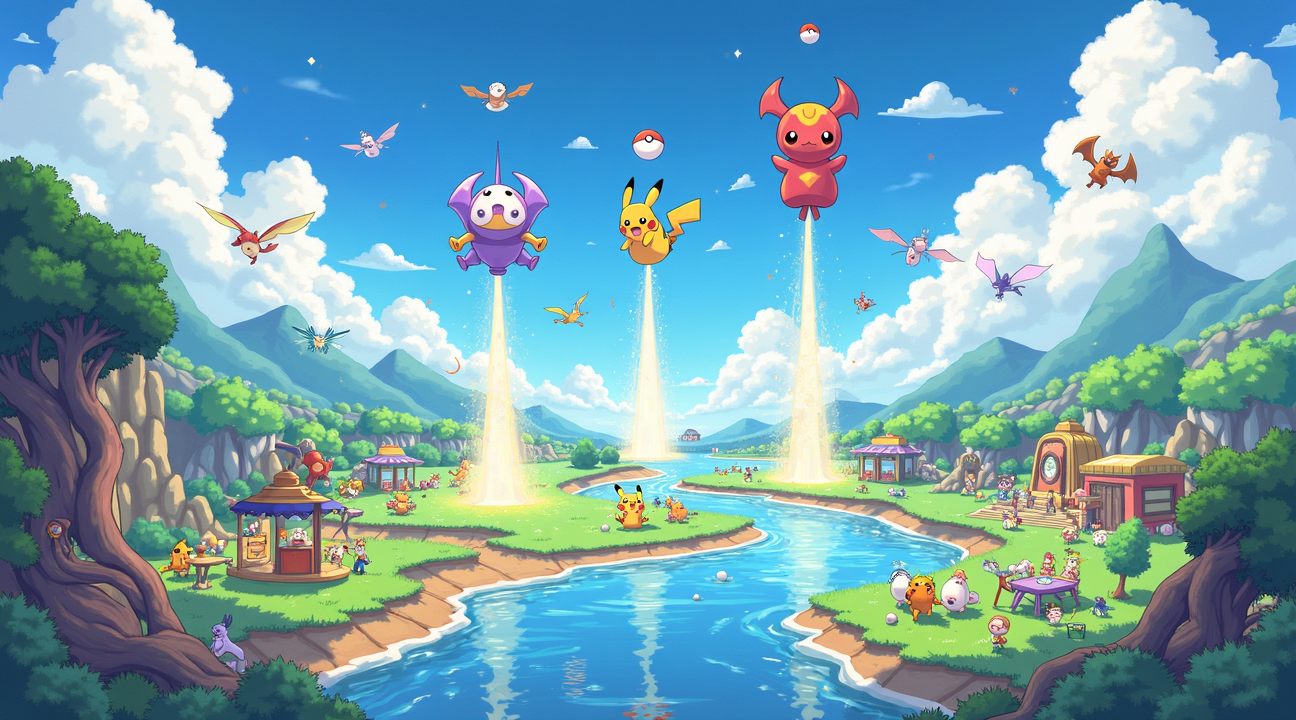
How Pokémon GO Changed Popular Culture and Gaming Forever
Pokémon GO fundamentally transformed how people interact with both digital entertainment and their physical surroundings. I witnessed firsthand how this revolutionary title created an entirely new category of gaming that blurred the lines between virtual and real-world experiences.
The game’s financial success speaks volumes about its cultural impact. Since launch, Pokémon GO has consistently ranked among the top-grossing mobile games worldwide, proving that augmented reality gaming could become a mainstream phenomenon rather than a niche experiment. This revenue performance validated the potential for location-based gameplay to create sustainable business models in the mobile gaming industry.
Breaking Down Traditional Gaming Barriers
Traditional gaming confined players to specific locations and devices, but Pokémon GO shattered these limitations by encouraging exploration of real-world environments. Players suddenly found themselves walking through parks, visiting landmarks, and discovering new areas of their communities while pursuing virtual creatures. This shift created unprecedented levels of social interaction among strangers who shared a common interest in catching Pokémon.
The game’s approach to physical activity changed how developers think about player engagement. Rather than keeping users sedentary, Pokémon’s continued relevance demonstrates how the franchise adapts to encourage movement and exploration. Community events and raids brought together players from diverse backgrounds, creating temporary social gatherings around shared virtual goals.
Regular updates and new features have kept the game fresh nearly a decade after its initial release. Developers continue introducing innovative mechanics, seasonal events, and expanded Pokédex entries that maintain player interest. These consistent improvements show how augmented reality gaming can evolve while preserving its core appeal.
The cultural ripple effects extended far beyond the gaming community:
- Local businesses reported increased foot traffic as players searched for PokéStops and Gyms.
- News outlets covered stories about players making unexpected discoveries during their hunts, from historical landmarks to community art installations.
- Law enforcement had to adapt to the new reality of large groups gathering in public spaces for virtual activities.
Pokémon GO’s influence on subsequent game development can’t be overstated. Numerous developers attempted to replicate its success with their own location-based titles, though few achieved similar cultural penetration. The game proved that mobile technology could create entirely new forms of entertainment that enhance rather than replace real-world experiences.
This paradigm shift established augmented reality gaming as a legitimate entertainment category with massive commercial potential. The game’s legacy continues influencing how developers approach player engagement, community building, and the integration of digital experiences with physical environments.
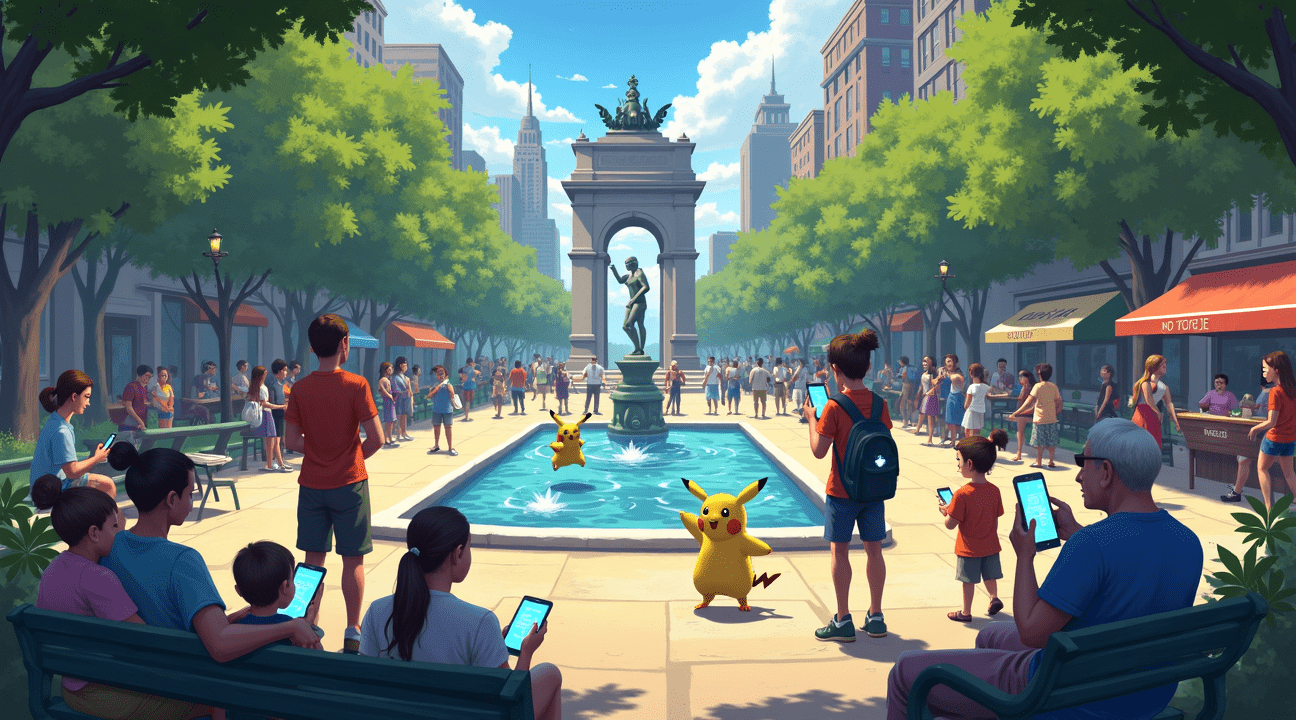
The Franchise’s Innovation Strategy for Staying Relevant
The Pokémon Company has mastered the art of continuous reinvention while respecting its core identity. I’ve watched this franchise consistently deliver fresh content that keeps millions of players engaged across multiple generations. Their approach centers on regular content updates that breathe new life into existing games while simultaneously developing entirely new experiences.
Balancing Tradition with Technological Advancement
The company’s innovation strategy revolves around several key principles that maintain their market position. These include:
- Regular seasonal events and content drops that create anticipation and maintain player engagement
- Integration of emerging technologies like augmented reality, as seen in Pokémon GO’s groundbreaking approach
- Cross-platform connectivity that allows players to transfer progress between different games
- Collaboration features that encourage social interaction and community building
- Fresh takes on classic gameplay mechanics that feel familiar yet exciting
I’ve observed how The Pokémon Company carefully adapts to new gaming trends without abandoning what makes Pokémon special. They’ve embraced mobile gaming, virtual reality experiments, and cloud-based services while maintaining the core collecting and battling mechanics that define the franchise. This balance between nostalgia and innovation creates a unique position in the competitive gaming market.
Pokémon Scarlet and Violet exemplify this strategy by introducing open-world exploration while preserving traditional Pokémon training elements. The games demonstrate how the franchise can evolve its fundamental formula without losing its essential character.
Technology adaptation plays a crucial role in their continued success. The company consistently evaluates emerging platforms and gaming technologies, implementing those that enhance the Pokémon experience. From smartphone integration to cloud saves and online trading systems, they’ve embraced digital transformation while ensuring accessibility for players of all technical skill levels.
Generation 9 competitive play showcases their commitment to keeping the strategic depth that appeals to serious players while introducing mechanics that welcome newcomers. This dual approach ensures the franchise captures both dedicated fans and curious newcomers.
Their innovation strategy also extends beyond gaming into multimedia experiences. New animated series, movies like the upcoming Detective Pikachu 2, and merchandise lines create multiple touchpoints for fan engagement. Each medium reinforces the brand while exploring different aspects of the Pokémon universe.
The franchise’s ability to maintain relevance stems from their understanding that innovation doesn’t require abandoning successful elements. Instead, they layer new features and technologies onto proven foundations, creating experiences that feel both familiar and fresh. This approach has enabled Pokémon to remain a cultural phenomenon across three decades of technological and social change.
Why Pokémon Continues to Dominate Multiple Entertainment Mediums
The Pokémon franchise has transformed from a simple Game Boy title into one of the most successful entertainment properties in history. I’ve watched this evolution unfold across nearly three decades, witnessing how the brand consistently adapts to new technologies and changing consumer preferences while maintaining its core appeal.
Financial performance tells a compelling story about Pokémon’s multi-media dominance. The franchise has generated over $100 billion in lifetime revenue across all platforms, making it the highest-grossing media franchise of all time. Video games remain the foundation, but movies, television series, trading cards, and merchandise contribute substantial revenue streams that reinforce each other’s success.
Cross-Media Success Drives Sustained Growth
The strategic expansion into multiple entertainment formats has created a self-reinforcing ecosystem. When a new Generation 9 game releases, it often coincides with anime episodes featuring the same Pokémon, merchandise launches, and sometimes theatrical releases. This coordinated approach maximizes visibility and creates multiple touchpoints for audiences to engage with the brand.
Detective Pikachu exemplifies this cross-media strategy’s effectiveness. The film brought live-action Pokémon to mainstream audiences who might never pick up a video game. Its success proved that Pokémon properties could attract viewers beyond the traditional gaming demographic, opening doors for expanded movie universes. The announcement of Detective Pikachu 2 confirms that studios recognize this untapped potential.
Animation continues to serve as a crucial bridge between generations. The anime series has introduced countless children to Pokémon concepts before they’re old enough to play complex video games. Parents who grew up with the original series often share episodes with their children, creating shared experiences that span decades.
Merchandise strategies demonstrate remarkable sophistication in targeting different age groups simultaneously:
- Plush toys appeal to younger children
- High-end collectible figures attract adult collectors
- Trading card tournaments bring together players from a wide age range
The mobile gaming revolution presented both challenges and opportunities for the franchise. Pokémon GO’s unprecedented success proved that the brand could adapt to new platforms while attracting previously untapped audiences. The game’s augmented reality features introduced innovative gameplay mechanics that traditional console games couldn’t replicate.
Competitive gaming has emerged as another significant growth driver. Tournament play attracts serious strategists who spend hundreds of hours perfecting their teams. These competitions create content for streaming platforms, further expanding the franchise’s reach into digital entertainment spaces.
Generational appeal stems from the franchise’s ability to grow with its audience while simultaneously attracting new fans. Adults who played the original games now introduce Pokémon to their children, creating a natural cycle of renewal. The brand maintains nostalgic elements for longtime fans while incorporating fresh concepts that feel contemporary and relevant.
Social media platforms have amplified this multi-generational connection. Memes, fan art, and gameplay videos spread across platforms, creating organic marketing that reaches audiences traditional advertising might miss. Special events like raid battles generate community excitement that extends far beyond the games themselves.
The franchise’s commitment to innovation within familiar frameworks explains its sustained relevance. Each new generation of games introduces fresh mechanics while preserving core elements that define the Pokémon experience. This balanced approach satisfies longtime fans’ expectations while attracting newcomers who discover the series through different entry points.
International expansion has also contributed to the brand’s dominance across entertainment mediums. Localization efforts ensure that cultural nuances translate effectively across different markets, while maintaining universal themes about friendship, growth, and adventure that resonate globally.
The digital transformation of entertainment consumption patterns has actually strengthened Pokémon’s position. Streaming services showcase anime episodes, mobile games provide on-demand entertainment, and social platforms facilitate community building around shared interests. Each medium reinforces the others, creating an entertainment ecosystem that adapts quickly to changing consumer preferences while maintaining consistent brand identity across all touchpoints.
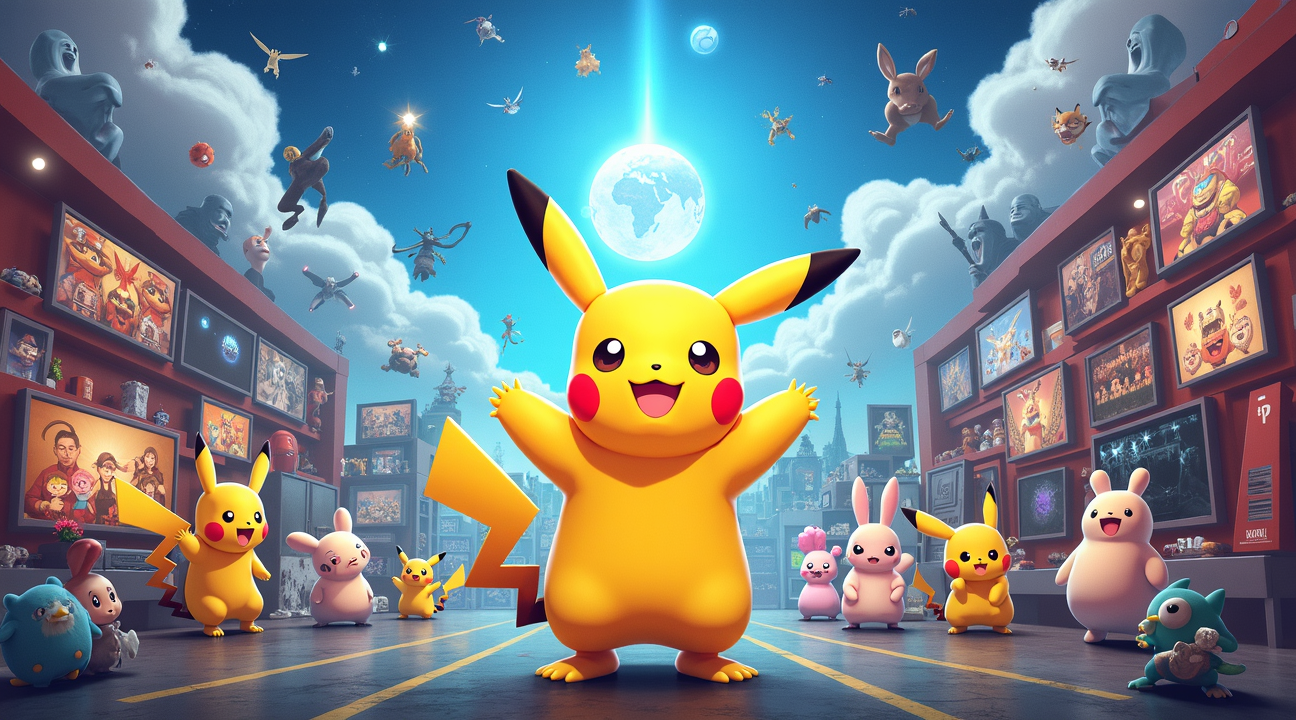
Sources:
The Pokémon Company – “How Pokémon GO Maintains 90 Million Monthly Players in 2025”
The Pokémon Company – “The $100 Billion Gaming Empire That Refuses to Slow Down”
The Pokémon Company – “Revolutionary Updates That Keep Players Coming Back”
The Pokémon Company – “How Pokémon GO Changed Popular Culture and Gaming Forever”
The Pokémon Company – “The Franchise’s Innovation Strategy for Staying Relevant”
The Pokémon Company – “Why Pokémon Continues to Dominate Multiple Entertainment Mediums”

